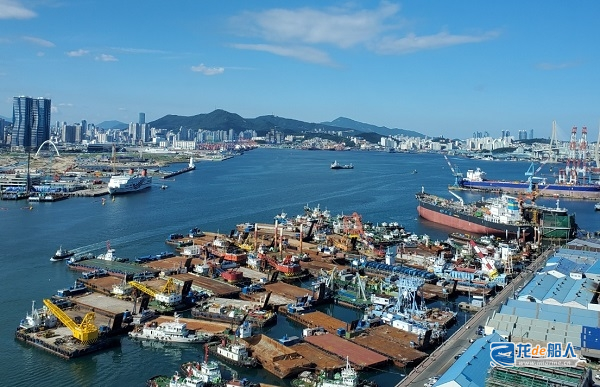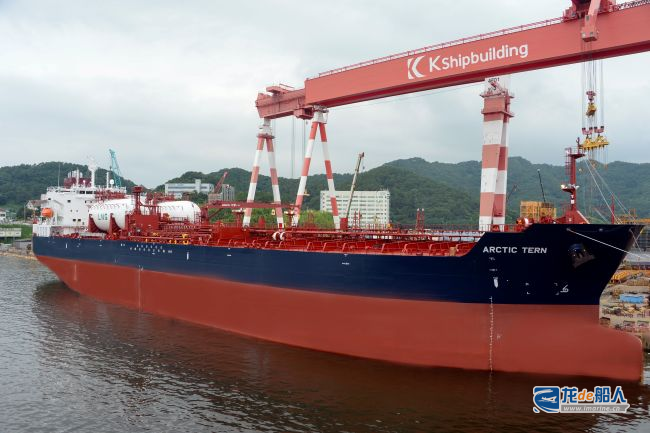Dae Sun Shipbuilding, a mid-sized South Korean shipbuilder, is planning to sell its shipyard through a Korea-U.S. cooperative shipbuilding project. However, according to official South Korean data, mid-sized shipyards are in decline, and their development trends are not promising.
South Korean media reports that Dae Sun Shipbuilding has formally initiated the sale process for its Yeongdo shipyard, which has been in preparation since 2023, and is now seeking potential buyers.
As the Korea-U.S. cooperative shipbuilding project—Make America Shipbuilding Great Again (MASGA)—gains increasing attention, several Korean companies have expressed interest in establishing Yeongdo Shipyard as a frontline base for ship maintenance, repair, and operation (MRO). In light of this, Dae Sun Shipbuilding believes now is the optimal time to sell the shipyard.

It is reported that Dae Sun Shipbuilding’s plan to sell its Yeongdo Shipyard has been in the works for more than two years, and now it has officially entered the execution phase. Upon the successful completion of the sale, Dae Sun Shipbuilding will subsequently focus on operating the Dadap Port Shipyard in Busan.
From a geographical standpoint, the area surrounding the Yeongdo Shipyard site has already developed into a commercial district. However, the likelihood of selling the land through real estate development is low. This is because the site is adjacent to HJ Heavy Industries, another mid-sized shipbuilder in South Korea, imposing significant restrictions on changing the land’s designated use.
Geographically, the Yeongdo Shipyard site is surrounded by a commercial district, but the likelihood of its sale through real estate development is low. This is because the Yeongdo Shipyard site is adjacent to HJ Shipbuilding & Construction (formerly “HANJIN Heavy Industries & Construction”), another mid-sized Korean shipbuilder, and there are significant restrictions on changing the land’s use.
In terms of financial data, Dae Sun Shipbuilding recorded a loss of 160 billion won (approximately $115 million) in 2023. In 2024, operating revenue increased by 17.1% year-on-year to 322.5 billion won (approximately $232 million), while the loss narrowed to 5.5 billion won (approximately $3.96 million).
In the first half of 2025, Dae Sun Shipbuilding achieved operating revenue of 132 billion won (approximately $95 million) and operating profit of 2.8 billion won (approximately $2.02 million), successfully turning a profit.
A representative from South Korea’s shipbuilding industry stated: “Dae Sun Shipbuilding’s Yeongdo Shipyard is currently advancing the specific procedures of finding an acquirer. Given that the surrounding shipyards are still in operation, maintaining the existing shipbuilding functions will become an important consideration after the acquisition.”

It is worth noting that while Dae Sun Shipbuilding views the Korea-U.S. joint shipbuilding project as an opportunity for this sale, the outlook for mid-sized Korean shipyards remains uncertain given the current state of the newbuilding market.
South Korean business media Koreaabizwire reported on September 8 that based on initiatives such as the MASGA project, cooperation opportunities between South Korea and the United States in the naval and merchant shipping fields have continued to expand. Despite this, South Korea’s medium-sized shipbuilding industry is still on the verge of collapse.
A recent research report released by the Overseas Economic Research Institute of the Export-Import Bank of Korea reveals that new orders for South Korea’s mid-sized shipyards plummeted by 72% year-on-year in the first half of 2025, totaling only 150,000 compensated gross tonnages (CGT)—equivalent to K Shipbuilding’s order for six tankers. Other mid-sized shipbuilders such as DH Shipbuilding, Dae Sun Shipbuilding, and HJ Heavy Industries secured no new orders whatsoever.
In contrast, HD Hyundai Mipo, classified as a large shipbuilder, secured orders for 27 medium-sized ships in the first half of this year, totaling 540,000 CGTs, accounting for nearly 79% of the total orders placed with medium-sized shipbuilders.
Meanwhile, the total order value for South Korea’s mid-sized shipyards plummeted to $290 million, marking an 81.5% year-on-year plunge. Their share of the global new ship order volume fell to 0.8%—the first time it has dipped below 1% since records began in 2006.
In terms of backlog orders, the order volume of medium-sized Korean shipyards has shrunk by 20%, which is only enough to maintain construction volume for the next two years.


